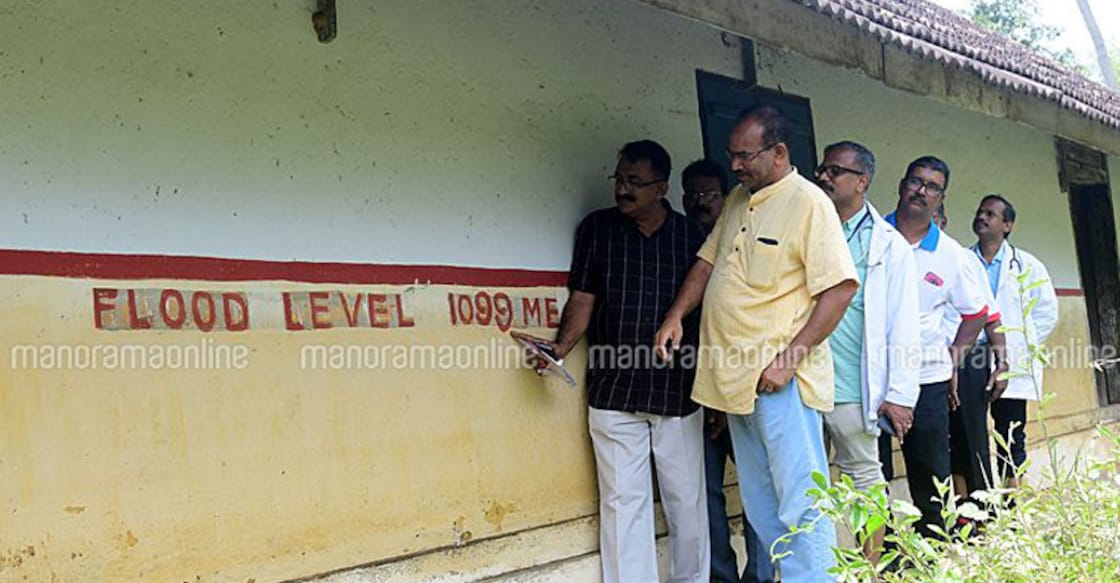Kerala floods: Mark the level on walls, not just in minds

Mail This Article
Kerala is on course for a massive rebuilding exercise after the disastrous August deluge submerged most parts of it for weeks together. Riverine towns such as Aluva and Chalakudy, low-lying Kuttanad on the west coast, Chengannur in the south-central part besides the hilly Idukki had bore the brunt of the calamity. Overall, 55 lakh people across Kerala were affected, about 500 lives were lost and properties were either lost or damaged in what has been the state’s gravest flood in 94 years.
How to reconstruct Kerala?
Muralee Thummarukudy, the chief of Disaster Risk Reduction of the UN Environment Programme, and G Shankar, Padma award-winning architect, gave Onmanorama broad guidelines on rebuilding the state after an assessment during their recent trip to some of the flood-hit regions:
The impact of a calamity should be mapped or analysed in every possible way as the first step towards restoration. Post floods, Keralites should first mark the floodwater level on the walls of their houses for record, they advised.
At the Bhagavati temple at Puthiyakavu, near North Paravur, a mark denoting the calamitous 1924 deluge is scribbled in Malayalam. It can be seen at the dining hall (oottupura) of the vintage shrine. The 2018 flood level came inches closes to the old level here before the waters receded by late August.
Kerala has only three or four places that have markings on the 1924 deluge, known popularly as the Great Flood of 1099, the Malayalam-era year corresponds to 1924 in the Gregorian calendar. The Thazhepalli Church at Malayattur and the Vediyur mansion’s temple at Thiruvairanikkulam that bear the crucial signs are also in the Periyar belt.
Compulsory marking
The experts urged Keralites to do a similar marking exercise for the 2018 deluge for the benefit of the current and future generations. Virtually, it should be the base line to build the state anew in anticipation of similar tragedies in near future amid global warming and accompanying climatic problems.
Developed countries have their flood maps. It helps in spotting ideal locations to build houses and other buildings, including factories. It is not just for deluges that the first-world nations have maps and wall markings. They have it for earthquakes and volcano eruptions. Maps exist even for the volume of noise around airports. Properties at such places sell at 30 per cent discounts.
In Kerala, all governmental establishments should necessarily mark the highest water level seen during the August floods. Mark the level - ‘Maximum flood level 2018’ - with paint. This should not be delayed as the watermarks will fade away soon, from the wall and our minds. This must be made compulsory through a governmental order.
There can even be a plaque at the height to ensure that the mark remains intact, the renowned experts stressed.
Hard lessons
How does the mark benefit? Those in the Chendamangalam panchayat office, near North Paravur, had learned a bitter lesson in this regard. The deluge had destroyed office furniture, electronic equipment and official documents. The panchayat secretary is worried and clueless on how the papers can be retrieved.

In mid-August when rains had begun to gain strength, rescue operations were launched from the panchayat. The staff and volunteers had left their vehicles on the office premises, only to know the next day that deluge had submerged it completely. Three-fourth of the first floor was inundated with rainwater. Only the top floor escaped the nature’s fury.
If the building had its flood level marked, the onset of the heavy rain would have promptly led the authorities to shift the office material on the ground floor upstairs. The riverine belts of Aluva and Paravur and Kodungallur, Mala and Chalakudy are yet to recover from the fury of the floods. Here flood had submerged the first floor, while at some places it had drowned the second floor as well.
Critical public buildings
The lack of a flood preparedness in Kerala affected our 'critical infrastructure' - hospitals, police station, fire station, telephone exchanges, electricity offices, railway stations, bus stands, etc. These are facilities that should remain active, especially in times of a natural calamity. Instead, in Kerala, when it rained continuously they too went dysfunctional. At many places, control rooms themselves had to be shifted to safer places.
Several hospitals had generators fixed at basements, where floodwater entered first and ensured that the building got no power after electric connections were snapped. Many hospitals customarily stored office files in basements. Flooded government offices lost critical documents, including Aadhaar cards of public. Several bank lockers, which stored valuable documents and costly jewellery, were also submerged.
Japanese lesson
In Japan, people would customarily pitch stones till where the tsunami waters invaded their islands. Called tsunami stones, they stand as landmarks recalling the country’s dangerous trysts with nature when rising sea waves used to batter its lands all too often. It is a big lesson for us in Kerala now.
As Thummarukudy says, "The floodwaters enter houses that are built in regions of prospective deluge." This, he adds, should be one underlying principle for Kerala as the state goes for a post-flood reconstruction.
Shankar adds that compound walls shouldn’t act as check dams impeding the natural flow of water. Collapsed walls and floodwaters unwilling to filter down are signs of bad human interference with nature.

